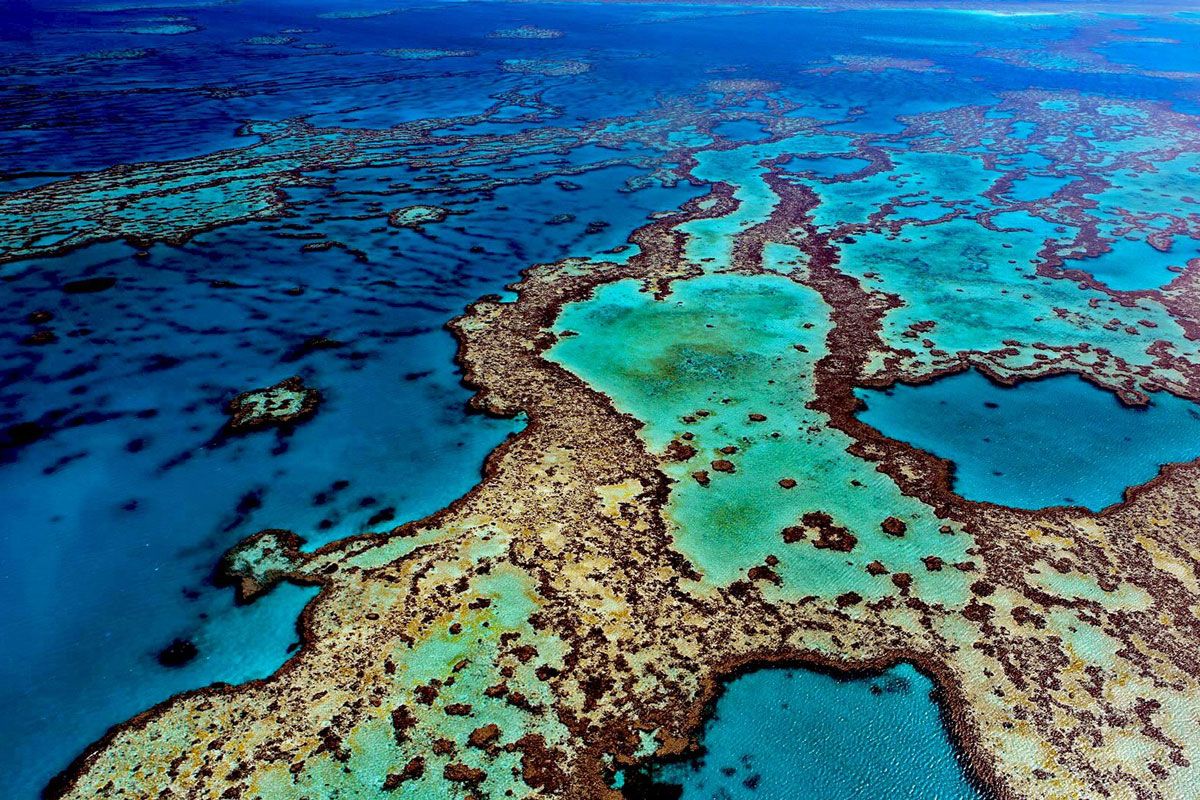During the pandemic, a lot of travel plans were scrapped. This led to crystal clear waters (if not dolphins) in Venice, iconic Balinese surf breaks uncrowded like the 1960s and an exodus of selfie sticks from Machu Picchu.
These benefits got us pondering: could there be a silver lining to COVID-19 hitting Australia? Could the travel ban give the Great Barrier Reef a much-needed break from anchors, pollution and wayward flippers? Is a dearth of tourism always good for the environment?
Yes and no. Yes, in that there will be a pause in tourism, and no in that it’s not much-needed. Quite the opposite, actually. Why? Allow Great Barrier Reef Marine Park Authority Chief Scientist Dr David Wachenfeld to explain.
View this post on Instagram
“Although The Great Barrier Reef gets about two million visitors per year, those visitors are visiting a marine park that’s bigger than two-thirds of countries on the planet,” Mr Wachenfeld told DMARGE over the phone.
“The visitation is concentrated mainly in two parts of the park,” Mr Wachenfeld added. “The actual density of visitation is really quite low, so the impact of tourism on The Great Barrier Reef is negligible.”
“I actually think that tourism has a very positive impact on the great barrier reef.”
“As far as I have ever encountered, everybody who has ever visited and seen The Great Barrier Reef falls in love with the place, and goes away with a stronger commitment to the [its] protection… and the environment more generally.”
“[Tourists] go home with a stronger commitment to act on climate change and protect the reef [which is] not only good for Australian economy but also good for the future and the health of the reef.”
Instead of under tourism, the biggest threat to the reef is climate change – a global problem, not a local one. That and insufficient funding to the reef’s protection agencies (which we thought would suffer in this time of non-existent tourism).
View this post on Instagram
Mr Wachenfeld quickly set us straight: “I don’t think that’s [loss of revenue for the protection agencies] an issue in as much as although, yes, visitors to the reef do pay an environmental management charge, and that charge does go to agencies that protect the reef, [the] government has committed to fix up that shortfall.”
“Not having visitors isn’t going to affect the funding of reef protection.”
What it is going to affect, is the Australian economy, to which the reef contributes, under normal circumstances, 6.4 billion dollars and supports 64,000 jobs.
“The vast majority of that economy is from the tourism industry so the lack of visitors will obviously mean that the tourism industry isn’t operating while the COVID 19 restrictions are in place. That’s quite a substantial issue for the Australian economy throughout central, southern and far northern Queensland.”
How you can help? Other than social distancing and doing your part to help this situation blow over as quickly and with as little damage possible, what you can do once travel restrictions get relaxed, Mr Wachenfeld told us, is come and see the reef and contribute to its economy and, by extension, maintenance.
This all comes in a context where the greatest threat to the reef is climate change. As The Guardian reported last week, “Heat stress has been building across the length of the reef this summer” with many tourism operators, tourists and recreational divers recounting “severe bleaching.”
The problem with this (one of them, anyway) is that the reef cannot simply migrate south, being destroyed at one end and regrowing at another. Not just because the colder areas in the south of Australia are also warming (as Mr Wachenfeld told us, “we’ve seen tropical animals and fish show themselves further south than they traditionally have”) – but because “there are already wonderful ecosystems in those southern marine areas,” which themselves are suffering.
“There are fantastically beautiful kelp forests around Tasmania which have suffered terribly because of marine heatwaves.”
“The fact that there might be some coral growing a bit further south than it used to is not really a compensation for what we’ve losing in those more temperate areas,” Mr Wachenfeld told us. On top of that, there’s a second problem with this idea that the reef can simply extend downwards if it gets too hot up north: it will run out of room.
“The Great Barrier Reef as a geological structure exists where it does in part because the continental shelf is very wide, so there is a big area of shallow ocean, only about 100m deep, that sticks off the north east coast of Australia. But south of the Great Barrier Reef, the continental shelf doesn’t do that so there is nothing for The Great Barrier Reef to move south onto.”
View this post on Instagram
“In other words, you might get a few corals growing on the coastline further south than you used to but there is absolutely no-where for a structure even vaguely like the Great Barrier Reef to grow in the southern coastal areas of Australia,” Mr Wachenfeld told us.
“If we want to have a Great Barrier Reef, we’re going to need to lift our game.”
